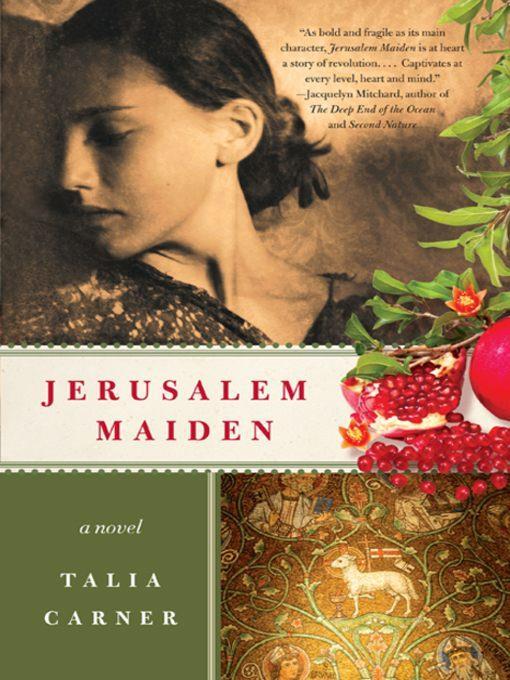
Jerusalem Maiden
A Novel
کتاب های مرتبط
- اطلاعات
- نقد و بررسی
- دیدگاه کاربران
نقد و بررسی

April 25, 2011
Carner's engaging new novel opens in 1911 in an impoverished Jerusalem, home for many generations to the Kaminsky family, strictly observant Haredi Jews. Men study Torah; women bear children and keep house. On the verge of adulthood, Esther Kaminsky faces a dilemma: pursue art (she has talent) or do what is expected of her? She fantasizes about a full life, where she could marry and make art, but after her mother dies, her father forces her into marrying a "modern Jew" from Jaffa, exiling Esther from the Jerusalem she loves. Forward to 1924 when, after a series of implausible events, Esther ends up alone in Paris, a city the author idealizes to an unrealistic degree. Carner (China Doll), formerly the publisher of Savvy Woman magazine, renders Esther's world with great authority and detail, revealing intimate familial rituals within the larger political and socioeconomic context. But what begins as an earnest story of an introspective girl struggling to interpret God's will resolves disappointingly. The setting, concerns, and frequent Hebrew vocabulary will make this particularly appealing to Jewish readers.

May 1, 2011
A young woman struggles against strict Orthodox traditions to realize her inner artist.
Esther Kaminsky, a fictional character based on Carner's grandmother, grows up in a Haredi (Ultra-Orthodox Jewish) compound in Jerusalem during the waning days of Ottoman rule. In part because of the exhortation to be fruitful and multiply, and in part because the men are left mostly free to study Torah, women's work in this crowded enclave is never done. Esther will be married off as soon as her menses begin (an event she postpones by secretly eating special herbs). Mademoiselle Thibaux, a teacher at a local girls' school, encourages Esther to develop her remarkable talent as a painter. However, Esther renounces her artistic yearnings after her mother dies of consumption—obviously a sign from Hashem (God) that Esther offended Him, not only by creating graven images but by stepping outside her circumscribed gender role. When her beloved father condemns her outspokenness, and her best friend, forced into marriage to a brutal man, kills herself, Esther plots to escape. Her musically gifted cousin Asher, also harboring forbidden artistic ambitions, wants her to marry him, so they can flee to Paris and pursue their callings. She agrees but is tricked into wedding Nathan, a wealthy Jaffa merchant. The story jumps ahead 10 years to 1924. Esther, mother of three, is the relatively content wife of Nathan, who is attractive and kind, if a bit stiff. Nonetheless, she still bridles at the restrictions on her life, exacerbated by meddling sisters-in-law. When Esther's disgraced and divorced sister Hanna arrives to help with the children, and Nathan departs on an extended business trip, Esther seizes the opportunity to go to Paris. Will Esther manage to free herself of the prohibitions which she has internalized and achieve artistic expression and true love? Readers will fervently hope so.
A welcome glimpse into a little-understood world.
(COPYRIGHT (2011) KIRKUS REVIEWS/NIELSEN BUSINESS MEDIA, INC. ALL RIGHTS RESERVED.)

























دیدگاه کاربران